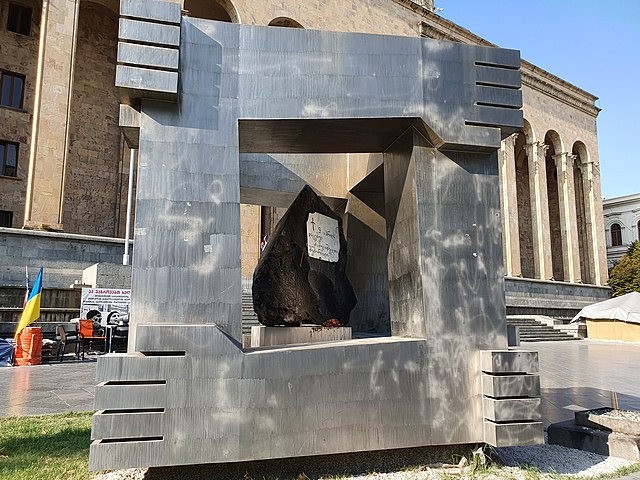The April 9 tragedy refers to the events in Tbilisi, Georgian Soviet Socialist Republic, on April 9, 1989, when an anti-Soviet, pro-independence demonstration was crushed by the Soviet Army, resulting in 21 deaths and hundreds of injuries. April 9 is now remembered as the Day of National Unity, an annual public holiday.
Photos of the April 9, 1989 massacre victims, mostly young women, on a billboard in Tbilisi (2008)
A memorial sculpture outside the Parliament building (pictured 2019)
Tbilisi, in some languages still known by its pre-1936 name Tiflis, is the capital and largest city of Georgia, lying on the banks of the Kura River with a population of around 1.2 million people. Tbilisi was founded in the fifth century AD by Vakhtang I of Iberia, and since then has served as the capital of various Georgian kingdoms and republics. Between 1801 and 1917, then part of the Russian Empire, Tiflis was the seat of the Caucasus Viceroyalty, governing both the northern and the southern parts of the Caucasus.
Image: Tbilisi, Georgia. View on historical neighborhoods from a hill
Image: Freedom Square, Tbilisi, Georgia
Image: Sameba Cathedral, Tbilisi کلیسای سامبا در تفلیس گرجستان 11
Image: 2018 The Sioni Cathedral






